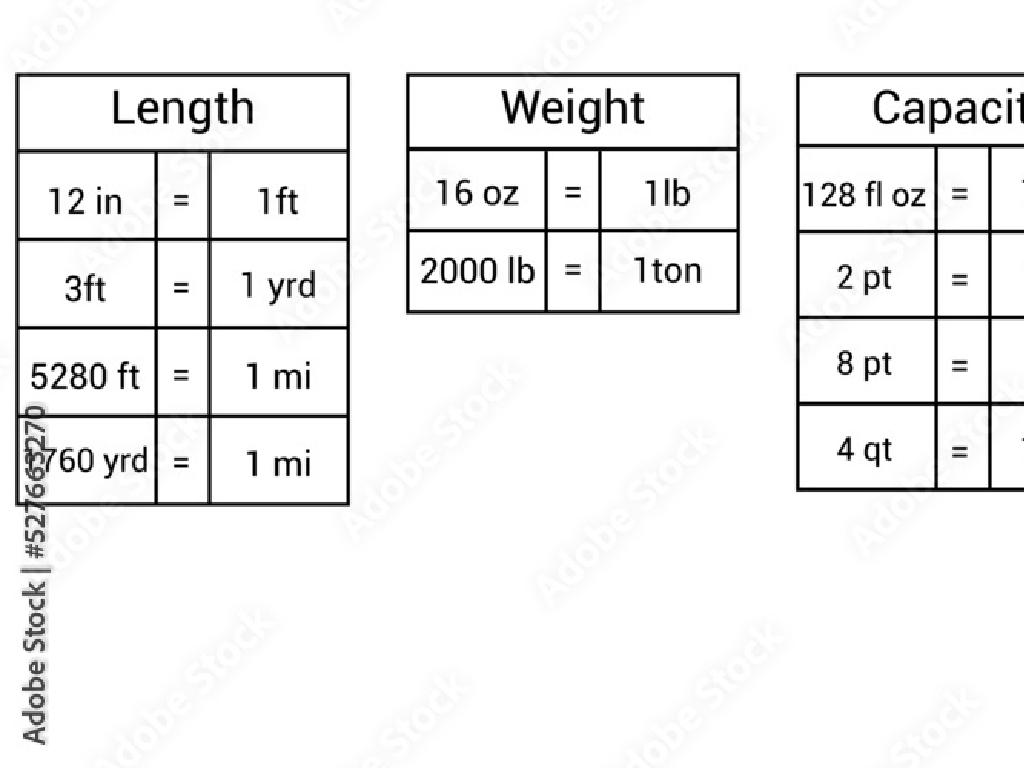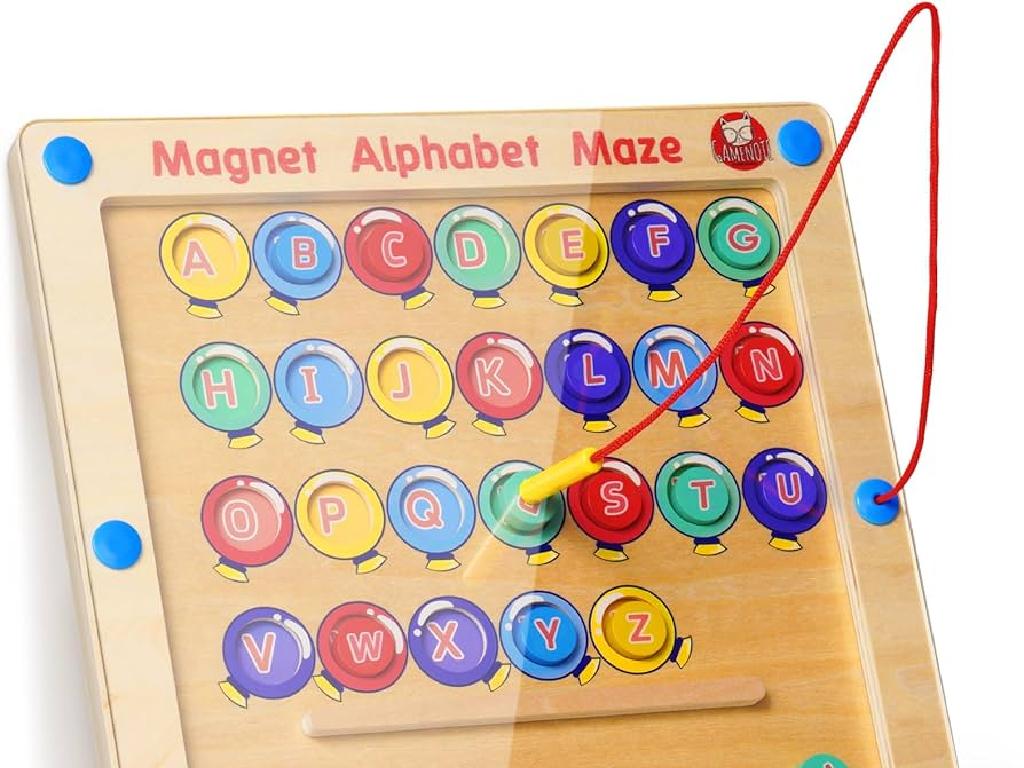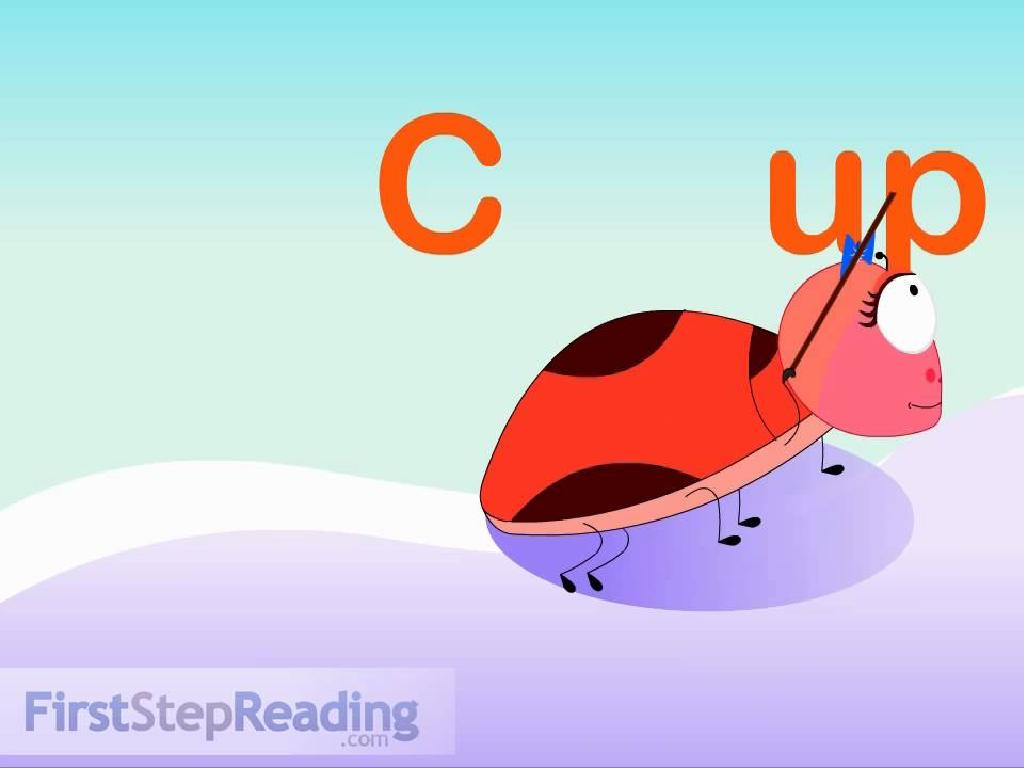Compare Numbers Using Multiplication
Subject: Math
Grade: Third grade
Topic: Understand Multiplication
Please LOG IN to download the presentation. Access is available to registered users only.
View More Content
Welcome to Multiplication!
– Greet and introduce today’s math
– Review the concept of multiplication
– Multiplication is repeated addition
– Explain comparing numbers
– Use multiplication to see which number is bigger or smaller
– Multiplication as a tool for comparison
– Example: 3 x 4 vs. 3 x 5 shows us that 15 is greater than 12
|
Begin the class with a warm welcome and an introduction to the day’s lesson on multiplication. Quickly review the concept of multiplication as repeated addition to refresh the students’ memory. Explain how multiplication can be used to compare numbers by determining which products are greater or smaller. Use simple examples to illustrate this, such as comparing 3 times 4 with 3 times 5 to show that 15 is greater than 12. This will help students understand the practical use of multiplication in comparing quantities and set the stage for more complex comparisons as they advance.
Understanding Multiplication
– Multiplication as repeated addition
– If you have 3 groups of 2 apples, that’s 3 times 2 apples, or 6 apples total.
– Examples with small numbers
– For instance, 2+2+2 can be expressed as 2 times 3, which equals 6.
– Learn multiplication symbols
– The ‘x’ or ‘*’ sign means ‘times’ as in 3 x 2 (three times two).
– Understand factors and product
– Factors are numbers we multiply. The product is the result of multiplication.
|
Begin by explaining multiplication as a way to add the same number several times, which simplifies counting and calculation. Use tangible examples like groups of fruits to illustrate this concept. Introduce the multiplication symbol, which can be an ‘x’ or ‘*’, and ensure students are familiar with the terms ‘factors’ and ‘product’. Factors are the numbers we multiply, and the product is the result we get after multiplication. Use simple numbers to show clear examples, and encourage students to think of their own examples to share.
Multiplication as Comparison
– Multiplication shows number comparison
– e.g., 4 times as many as 2 is 8
– Visual comparison with groups
– Compare 3 groups of 2 apples with 2 groups of 3 apples
– Understanding ‘greater than’ and ‘less than’
– Is 4 x 3 greater than 2 x 6?
– ‘Equal to’ in multiplication
– When is 3 x 4 equal to 4 x 3?
|
This slide introduces the concept of using multiplication to compare numbers. Start by explaining that multiplication can show how many times one number contains another. Use visual aids, like pictures of groups of apples, to help students see the comparison. Discuss how we can use multiplication to determine if one amount is greater than, less than, or equal to another amount. For example, 4 multiplied by 3 is greater than 2 multiplied by 6. Encourage students to think about how the order of numbers in multiplication doesn’t affect the product, leading to the understanding of the commutative property of multiplication.
Comparing Numbers with Multiplication
– Use a multiplication chart
– Find products to compare two numbers
– Examples: comparing numbers
– 4 x 3 vs. 4 x 5 shows 12 is less than 20
– Multiplication shows size
– Larger products mean larger numbers
– Practice with different numbers
|
This slide is aimed at teaching third graders how to compare numbers by using multiplication. Start by explaining the purpose of a multiplication chart and how it can be used as a tool to find the products of numbers. Work through specific examples where students use multiplication to compare which numbers are larger or smaller. For instance, comparing 4 x 3 and 4 x 5 to see that 12 is less than 20, which helps them understand that 5 is bigger than 3 when multiplied by the same number. Emphasize that multiplication can simplify the process of comparing numbers by transforming it into a comparison of products. Encourage students to practice with different sets of numbers to become comfortable with this concept. Provide several examples and allow students to try their own during class.
Let’s Practice Together: Multiplication Comparisons
– Interactive group practice
– Solve comparison problems
– Use multiplication to compare two numbers, like 4×3 vs 2×6
– Explain your thinking
– Share how you decided which number is larger
– Learn from each other
|
This slide is for an interactive class activity focused on comparing numbers using multiplication. Start by presenting a few multiplication comparison problems to the class and solve them together. Encourage students to participate by asking them to explain their thought process when determining which product is larger. For example, when comparing 4×3 and 2×6, guide them to see that both expressions equal 12, so they are the same. This activity will help students understand the concept of comparison using multiplication and develop their reasoning skills. Have a variety of problems ready, and consider pairing students up for peer learning. Remember to praise their efforts and clarify any misconceptions that arise.
Multiplication Comparison Games
– Learn a new multiplication game
– Understand game rules and objectives
– We’ll use multiplication to see which numbers are bigger or smaller
– Split into groups for the game
– Teams will take turns to solve and compare
– Play and learn with friends
– Share your answers and see who wins!
|
This slide introduces a class activity focused on comparing numbers through multiplication. The game is designed to reinforce the concept of multiplication and how it can be used to compare the size of numbers. Start by explaining the game’s rules, ensuring that the students understand the objective is to use multiplication to determine which of two numbers is greater. Divide the class into small groups, ideally of 3-4 students, to foster collaboration. Each group will take turns to multiply and compare numbers, discussing their strategies and thought processes. As they play, circulate around the room to offer guidance and ensure that each student is engaged. After the game, bring the class together for a discussion about what they learned and the different strategies they used.
Class Activity: Multiplication Comparison Challenge
– Receive your number cards
– Multiply two drawn cards
– If you draw 3 and 4, what is 3 times 4?
– Determine the greater product
– Is 12 greater than the product of 2 and 5?
– Pair up and discuss results
|
In this engaging class activity, students will practice comparing numbers through multiplication. Each student will be given a set of number cards. They will then draw two cards at random, multiply the numbers together, and determine which of their products is greater. Afterward, students will pair up with a classmate to compare their results and discuss their findings. This activity not only reinforces multiplication skills but also encourages critical thinking and discussion among students. Possible variations of the activity could include using dice to generate numbers, timing the activity for a fun race, or having students create their own number cards for an added element of creativity.
Conclusion: Multiplication Comparison
– Recap: Multiplication Basics
– We learned how to multiply numbers.
– Comparing Numbers with Multiplication
– Use multiplication to see which number is bigger or smaller.
– Q&A Session
– Practice Makes Perfect
– Keep practicing with different numbers!
|
As we wrap up today’s lesson, let’s review the key concepts we’ve covered. We started with the basics of multiplication, understanding it as repeated addition. Then, we moved on to comparing numbers by using multiplication, which helps us determine the size of numbers in relation to each other. Now, it’s time to address any questions the students may have to ensure they are clear on these concepts. Encourage them to ask questions and express any confusion they might have. Finally, remind them that mastering multiplication and comparison takes practice, and they should continue to work on problems at home. Provide a few example problems for them to work on as homework to reinforce today’s lesson.
Homework: Multiplication Comparison
– Complete the multiplication worksheet
– Try your best, practice is key
– Follow submission guidelines
– Worksheet due next Monday in class
– Remember, effort brings improvement
|
This homework assignment is designed to reinforce today’s lesson on comparing numbers using multiplication. The worksheet provided contains problems that require students to apply multiplication to compare different numbers. Encourage students to attempt every problem and remind them that making mistakes is a part of learning. Emphasize the importance of practice in mastering multiplication skills. Provide clear instructions on the worksheet submission, which is due next Monday at the beginning of class. Let students know they can ask questions during the next class if they find any challenges while completing the worksheet.






